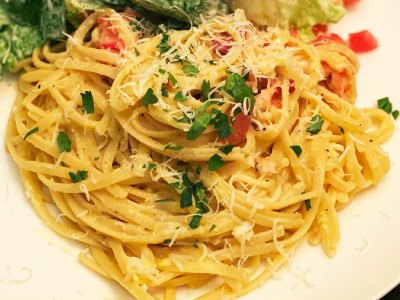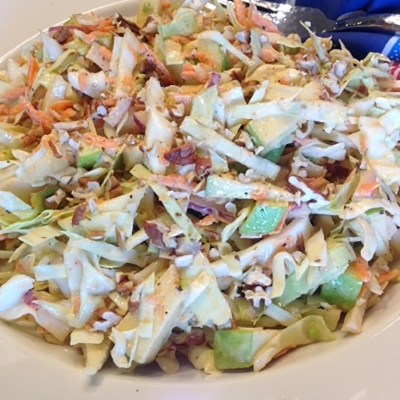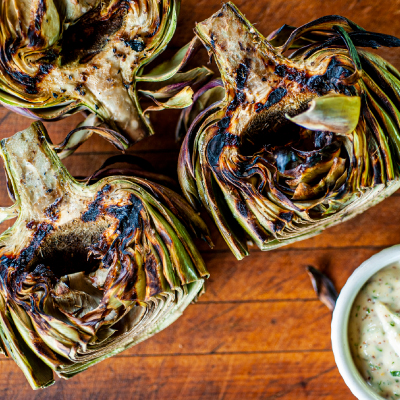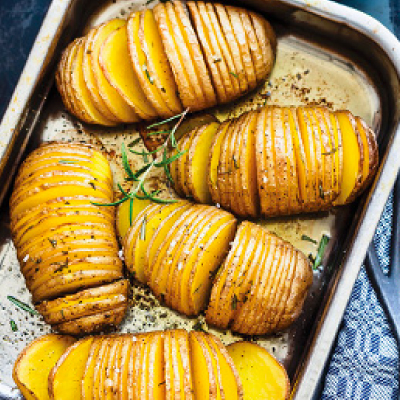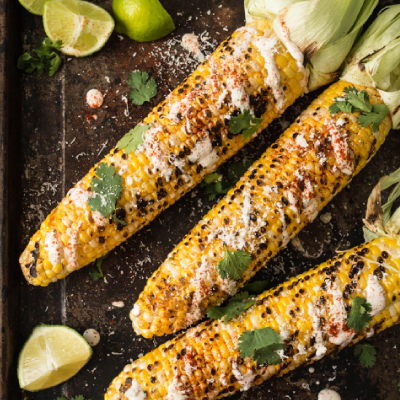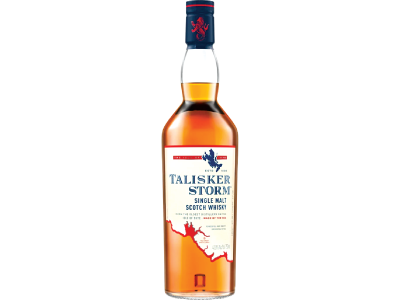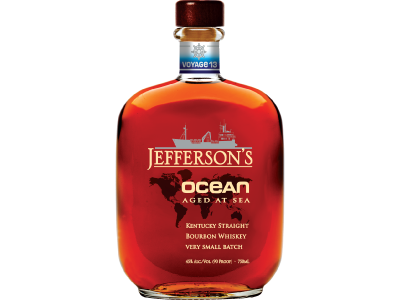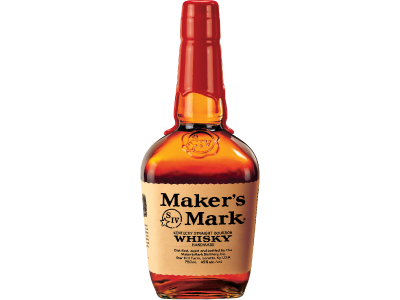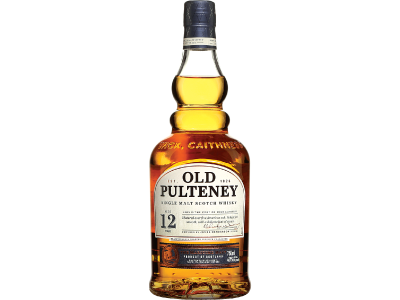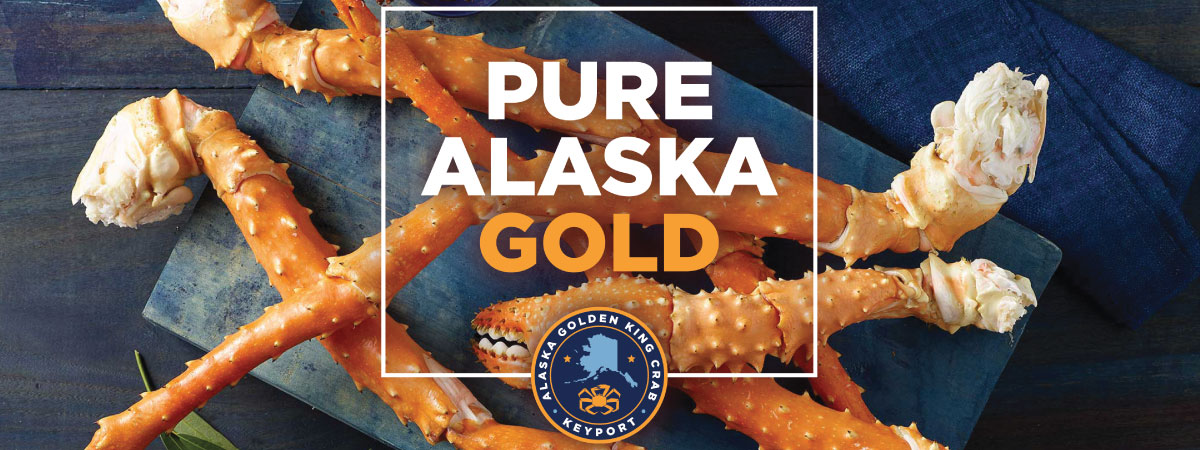
All Natural. Wild Caught. American Crab.
Bairdi Crab
Click here to learn more about Bairdi Crab.
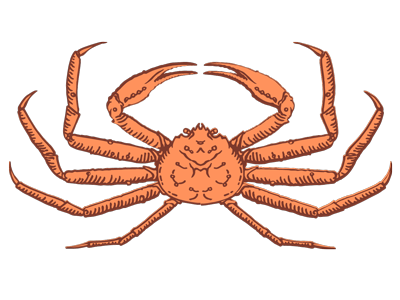
- Bairdi are larger than Opilio, reaching 3 to 5 lbs in weight.
- Noted for its sweet, succulent taste and delacate texture.
- The harvest is usually small.
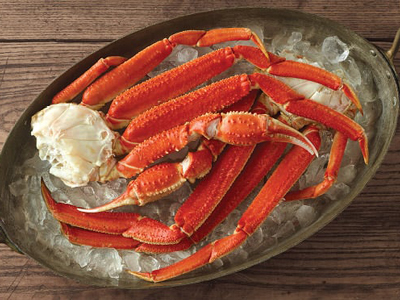
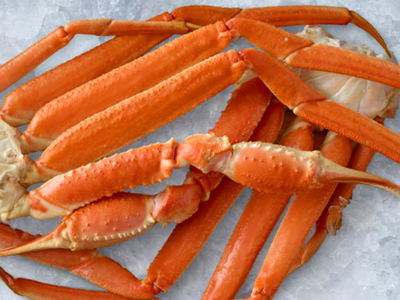
Snow Crab Habitat
Snow crab are found in the very cold waters of the North Pacific Ocean and Bering Sea. They live on the muddy and sandy bottom of the continental shelf and slope, where they feed on animals living in the sediment and avoid predators by burrowing into the mud.
Icy Harvest
Opilio and Bairdi are typically harvested at average depths of 360 feet below sea level during the frigid winter months of January, February and March. Harvest can be challenging as crews face icy conditions and cold, stormy waters. 800 lb traps, called pots, are set with bait and then retrieved within 36-48 hours. Boat crews use hydraulic lifts to raise the pots, which can weigh over 1,000 lbs when full.
From the Bering Sea to you
Snow crab is kept in holding tanks aboard the crab vessel until it can be delivered from the Bering Seat to shore. Once landed, the crab is cooked, cleaned, sectioned and frozen. The freezing process creates a protective glaze that ensures Keyport Snow crab retains its wild-caught flavor during shipping. To guarantee the best taste experience and food safety, keep frozen until ready to thaw and use. Do not thaw and refreeze.
Stewardship and Sustainability
According to Fishwatch, “U.S. wild-caught Alaska Snow crab is a smart seafood choice because it is sustainably managed and responsibly harvested under U.S. regulations.” FishChoice concurs, giving Snow crab from Alaska a “Best Choice” sustainability rating. Alaska Snow crab is harvested off of the coast of Alaska in the Bering Sea under the management of NOAA Fisheries, theNorth Pacific Fishery Management Council, and the Alaska Department of Fish and Game in order to ensure sustainability for future generations. Only male crabs of a certain size are harvested, allowing the females to reproduce and replace the ones that were harvested. Economic sustainability is also addressed in the Alaska Snow crab fishery through the Community Development Quota Program which opens participation and investment to eligible coastal communities by allowing them ten percent of the harvest.
Alaska Golden King Crab
Click here to learn how to prepare Golden King Crab Legs.
The World’s Most Sustainable King Crab
Named for their golden-colored shells, Golden King crab are often hailed by Keyport boat captains as their favorite King crab. Once known as Brown King crab, Golden Kings are harvested from the deep waters surrounding the remote Aleutian Islands of Alaska. The unique combination of pressure from the great ocean depth combined with clean, pure feed results in a sweeter taste profile and lighter texture than that of its better-known cousin, Red King crab. Our Golden King crab is noted for its unmatched sustainability. Outstanding fishery management has ensured a consistent and sustainable supply, earning Golden King crab its reputation as the world’s most sustainable King crab.
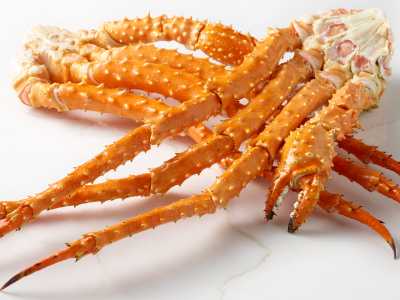
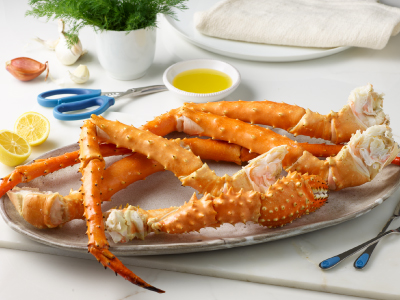
Remote & Pristine Habitat
Our Golden King crab comes from the steep slopes of the Aleutian Trench, a deep-sea trench that runs along the coastline of the Aleutian Islands in Alaska. The powerful currents of the Alaska Stream carry fresh water from the greater Pacific Ocean through the passes of the Aleutian Islands and into the Bering Sea. This regular infusion of swift-moving, nutrient-packed water means that the Golden King crab enjoy some of the purest feed in the Bering Sea.
Harvested At Great Depths
Golden King crab live far below sea level on the rocky, underwater slopes of the Aleutian Trench. They are harvested at depths that can reach over 300 fathoms (1800 feet) below sea level – deeper than any other commercial fishery in Alaska. Goldens move up and down the steep walls of their habitat making them particularly tricky to find and catch.
Longline: Only Five Crab Boats
in the World
Golden King crab are harvested by setting traditional crab pots on longlines that have 10 or more pots set at 500-foot intervals on each string. This system ensures that the pots can be found again in the deep and turbulent waters of the Aleutian habitat. Given that each pot can weigh close to 1,000 lbs when full, massive hydraulic systems are needed to retrieve the longline strings. This hybrid method is unique to Golden King crab and only five boats in the world are equipped with the necessary equipment and gear to harvest Golden King crab in this way.
From the Aleutian Islands to You
Once harvested, Golden King crab is kept in holding tanks aboard the crab vessel until it can be delivered to shore live. Once landed, the crab is cooked, cleaned, sectioned and frozen. The freezing process creates a protective glaze that ensures Keyport King crab retains its wild-caught flavor during shipping. To guarantee the best taste experience and food safety, keep frozen until ready to thaw and use. Do not thaw and refreeze.

Deadliest Catch – Season 18
(Alaska Golden King Crab)
Meet Captain Rip of the F/V Patricia Lee!
The “Patty Lee” is an American commercial fishing vessel that was built in 1978 to harvest crab in the Bering Sea. Over forty years later, the Patricia Lee is still active in the Bering Sea, harvesting Golden King crab and Snow crab under the leadership of Captain Rip Carlton. As a captain of one of only five boats that harvest Golden King crab, it’s no exaggeration to describe him as one of the world’s foremost authorities on Goldens.
Golden King Crab Pasta Carbonara Recipe by Keyport
Just in from harvesting crab in Alaska, Co-Captain Anna is returning from a busy season harvesting Golden King crab in the Aleutian Islands of Alaska. Back in her home kitchen, she took a moment to share one of her favorite recipes for King crabs legs: King Crab Pasta Carbonara. Slightly sweeter and lighter than its Red King cousin, Golden King crab is the perfect choice for this dish.
Dungeness Crab = The Prized Catch
Click here to learn how to prepare Alaska Dungeness Crab.
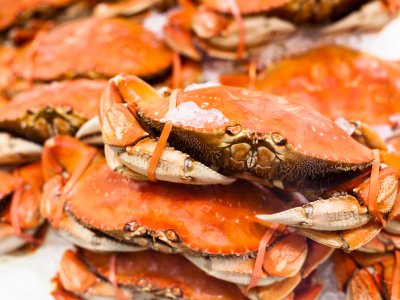
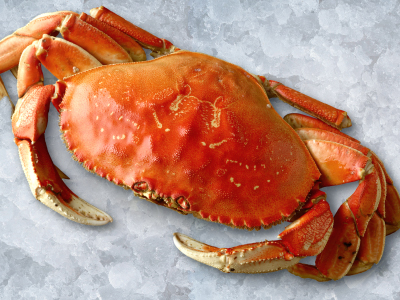
Northwest Delicacy
Dungeness crab has long been a wild-caught Pacific Northwest delicacy, beloved for its sweet taste and tender meat. Sometimes called “Dungies,” Dungeness crab are typically 6-7 inches across with short, stout legs and a shell that turns bright orange when cooked. Dungeness crab gets its name from the town of Dungeness, WA where the first commercial crab fishery on the West Coast was founded in 1848. Today, Dungeness crab is a staple of Northwest cuisine and treasured by chefs and seafood lovers across the country.
Coastal Habitat
Keyport’s Dungeness crab is wild-caught in the chilly ocean waters of Oregon, Washington and Alaska. Native to the western coast of the US, Dungeness can be found in the Pacific from California all the way to the Aleutian Islands of Alaska. Dungeness crab find safe habitat in shells and eelgrass as juveniles but move to sandy and muddy intertidal zones as they grow. Dungeness crab prefer shallow coastal depths of less than 90 feet, although some have been found at depths of almost 500 feet.
Wildly Delicious
Keyport’s Whole Cooked Dungeness crab is pre-cooked and ready to eat. They can be served cold or warmed and are equally good on their own or as part of a creative dish. Given its versatility, delicate taste and flaky texture, whether shaped into savory crab cakes or steamed fresh and garnished with a few accoutrements, the meat is reliably tender and sweet. It’s also packed with nutritional value and has a high meat-to-shell ratio.
Try These Side Dishes: Perfect to Pair with American Crab
Talisker Storm
Single Malt Scotch Whiskey
750 ml
Tasting notes: Powerful, fresh-clean and growing in complexity like a gathering storm. Sweet maltiness with ripe red berry fruit moves to smoke, brine and an explosion of pepper. Body : Medium. Palate : Mellow and rich, then very spicy: a pure, tongue-coating sweetness joins a nutty smokiness to embrace those spicier notes.
Jefferson's
Ocean Aged at Sea
750 ml
Tasting notes: Welcome aboard rye’s first voyage, joining our Jefferson’s Ocean Aged at Sea® family as our 26th voyage. This double-barreled rye whiskey travels the world on ships at sea, blending the bold flavor of rye with the rich caramelization that comes from the unique sea aging process.
Maker’s Mark®
Bourbon
750 ml
Tasting Notes: The nose finds supersweet deep caramel candy and almond extract, but don't be fooled. On the tongue, it's punch-in-the-nose dry and biting. Best served on ice, which takes down the burn and lets the pronounced woody flavors come through: lots of oak, strong tea and cigar tobacco.
Old Pulteney
12 Year Single Malt Scotch
750 ml
Tasting Notes: Deep amber with a slight pink hue. Nose: Medium to high intensity, dry with a briny hint of sea air. Palate: Sweet, floral, citrus: lemon and lime plus dry banana skin. Smooth and faintly salty.


